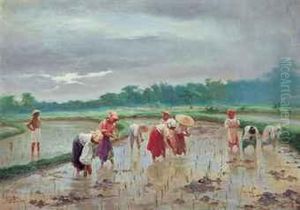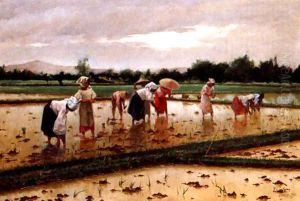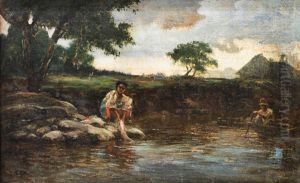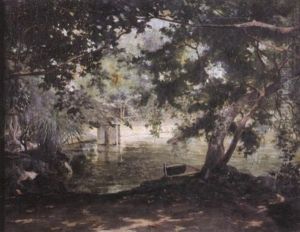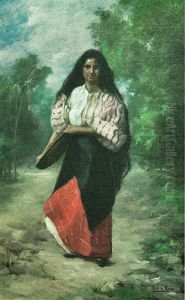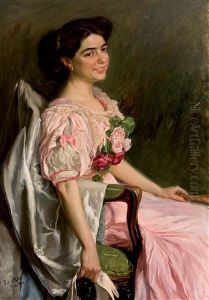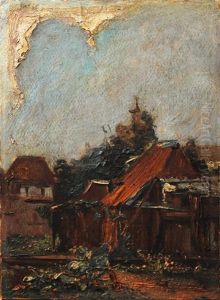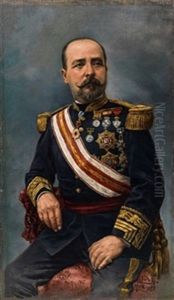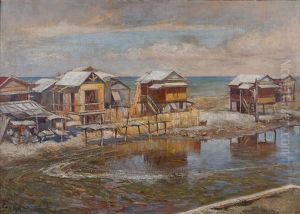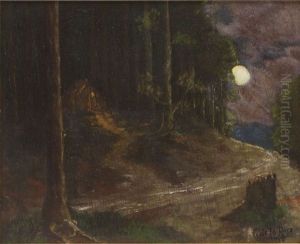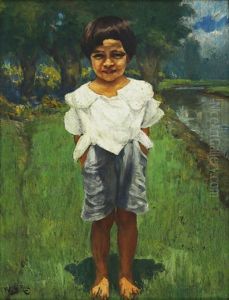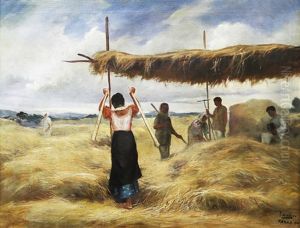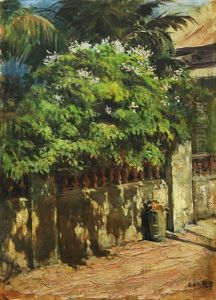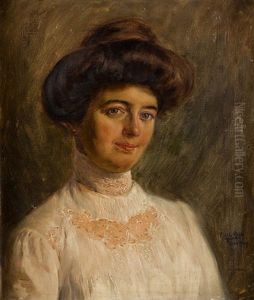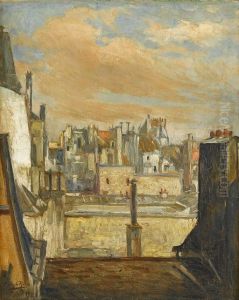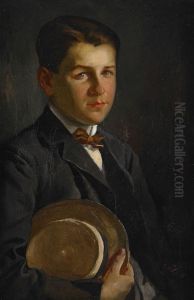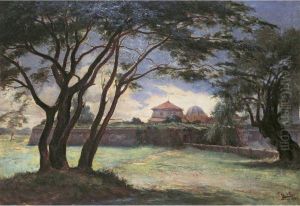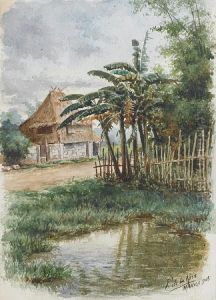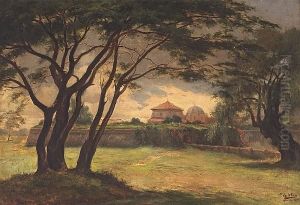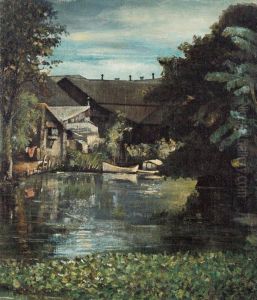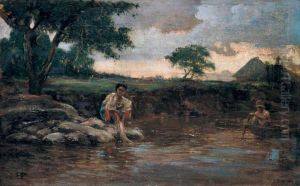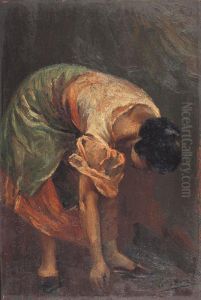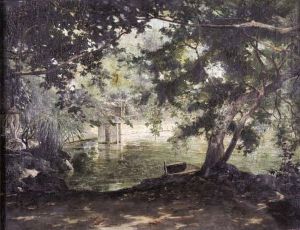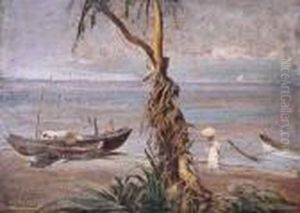Fabian De La Rosa Paintings
Fabian De La Rosa was a pivotal figure in Philippine art, born on May 5, 1869, in Paco, Manila. He grew up in a family with artistic inclinations; his aunt, Isabelo de los Reyes, was a painter, and his uncle, Hidalgo, was a renowned artist. This environment undoubtedly nurtured his early interest in art, leading him to pursue his passion with fervor. De La Rosa studied at the Escuela de Bellas Artes in Manila and was significantly influenced by the Spanish academic art tradition, which was prevalent in the Philippines during his formative years.
De La Rosa's work is characterized by his mastery of various genres, including portraiture, landscapes, and genre scenes, often depicting Filipino customs, traditions, and the daily lives of the local people. His paintings are noted for their romanticism and realism, infused with a sense of nationalism. He had an adept use of light and shadow, which added depth and realism to his work. One of his most famous works is 'Planting Rice,' which captures the laborious yet serene process of rice planting in the Philippines.
He played a significant role in the development of Philippine art, not only through his artworks but also by mentoring future generations of Filipino artists. De La Rosa was a key figure at the University of the Philippines’ School of Fine Arts, where he served as director from 1927 until his death in 1937. Under his guidance, the school became a breeding ground for new artistic talent, and he was instrumental in shaping the direction of Philippine art during the early 20th century.
Beyond his contributions to art and education, De La Rosa was also involved in various exhibitions, both locally and internationally, helping to bring Philippine art to a wider audience. His legacy is that of a pioneer who bridged Filipino traditions with Western artistic techniques, contributing significantly to the identity of Philippine art.
Fabian De La Rosa's death on December 14, 1937, marked the end of an era for Philippine art. However, his influence persists, and he is remembered as one of the country's most important and revered artists, whose works continue to inspire admiration and respect from art lovers and scholars alike.
